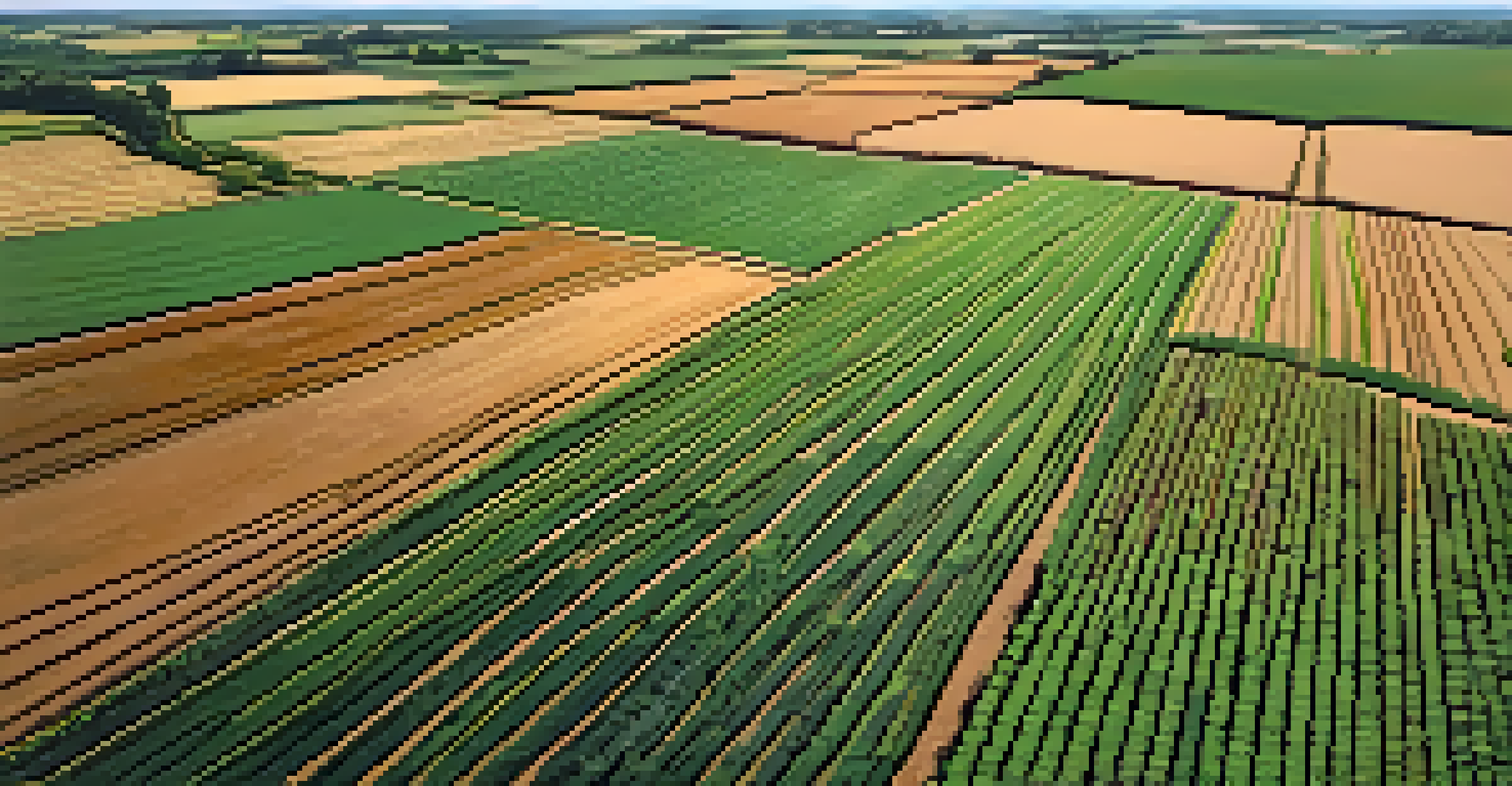The Importance of Crop Rotation in Sustainable Farming

What is Crop Rotation and Why is it Important?
Crop rotation is the practice of changing the type of crop grown in a particular area from season to season. This method has been used for centuries and is crucial for maintaining soil health and fertility. By varying the crops, farmers can prevent the depletion of specific nutrients that certain plants tend to consume heavily.
Crop rotation is the practice of changing the type of crop grown in a particular area from season to season.
For instance, legumes such as beans and peas enrich the soil with nitrogen, a vital nutrient. When rotated with heavy feeders like corn or wheat, they create a balanced ecosystem that reduces the need for synthetic fertilizers. This not only saves money for farmers but also contributes to a healthier environment.
Moreover, crop rotation can help mitigate pest and disease pressures. Different crops attract different pests, and by rotating them, farmers can disrupt the life cycles of harmful organisms, reducing the chances of an outbreak.
Enhancing Soil Fertility Through Diversity
One of the primary benefits of crop rotation is the enhancement of soil fertility. Different plants have varying nutrient requirements and root structures, which means that rotating crops can help in utilizing the soil more efficiently. This diversity allows for a more balanced nutrient profile in the soil over time.

For example, deep-rooted crops like alfalfa can break up compacted soil layers, improving drainage and aeration. When followed by shallow-rooted crops, the soil remains loose and fertile, fostering better growing conditions. This cycle of planting supports a rich and vibrant soil ecosystem.
Boosts Soil Health and Fertility
Crop rotation enhances soil fertility by alternating crops with different nutrient needs, promoting a balanced ecosystem.
Furthermore, maintaining diverse crops helps prevent nutrient depletion. If the same crop is planted year after year, essential nutrients can become scarce, leading to poorer yields. Crop rotation ensures that soil remains rich and productive for generations.
Reducing Soil Erosion and Enhancing Structure
Soil erosion is a significant concern for farmers, particularly in areas with heavy rainfall or wind. Crop rotation plays a vital role in reducing erosion by maintaining soil structure and cover. Different root systems help hold the soil in place and absorb water efficiently.
Healthy soils produce robust plants that are more resistant to disease and pests.
For example, planting cover crops like clover or rye during off-seasons can prevent soil loss and improve moisture retention. These crops not only protect the soil but also contribute organic matter as they decompose, further enhancing soil quality.
In contrast, fields planted with a single crop can become vulnerable to erosion, especially after harvest. Rotating crops creates a protective barrier, allowing the soil to remain intact and fertile, which is essential for sustainable farming practices.
Pest and Disease Management Through Rotation
One of the most significant advantages of crop rotation is its role in managing pests and diseases naturally. When farmers plant the same crop repeatedly, pests and diseases that target that crop can thrive, resulting in significant losses. Rotating crops interrupts these cycles.
For instance, if a farmer grows potatoes one year and switches to corn the next, pests that specifically target potatoes won't have a food source. This natural disruption can lead to healthier crops and reduced reliance on chemical pesticides.
Reduces Pest and Disease Risks
By varying crops, farmers can disrupt pest life cycles, leading to healthier plants and decreased reliance on pesticides.
Additionally, some crops can even act as natural repellents to certain pests. Incorporating plants with pest-repelling properties into the rotation can further enhance pest management strategies, making farming more sustainable and eco-friendly.
Improving Water Management and Conservation
Crop rotation can significantly improve water management on farms. Different crops have varying water needs and root depths, which means that rotating crops can help optimize water usage. For example, deep-rooted plants can access moisture from deeper soil layers, while shallow-rooted crops may thrive in the topsoil.
By alternating between these types of crops, farmers can enhance moisture retention and reduce the risk of drought stress. This approach not only conserves water but also ensures that crops receive the right amount of moisture throughout their growth cycles.
Moreover, some cover crops can improve soil structure, allowing for better water infiltration. This means less runoff and more water absorbed into the soil, which is essential for sustainable farming practices in regions facing water scarcity.
Economic Benefits of Crop Rotation for Farmers
Farmers can enjoy several economic benefits from practicing crop rotation. By improving soil health and fertility, crop rotation leads to higher yields and better quality produce, which can translate into increased revenue. Healthy soils produce robust plants that are more resistant to disease and pests, reducing losses.
Additionally, the reduced need for chemical fertilizers and pesticides can lead to significant cost savings. Farmers who adopt sustainable practices often find that their input costs decrease over time, allowing them to invest in other areas of their operations.
Improves Economic Viability
Practicing crop rotation can lead to higher yields, cost savings on fertilizers, and access to new markets for diverse crops.
Moreover, diverse crop rotations can open up new markets for farmers. For instance, growing specialty crops or organic produce can attract higher prices, providing further economic incentive to diversify their planting strategies.
Challenges and Considerations in Implementing Crop Rotation
While crop rotation offers numerous benefits, it also comes with its share of challenges. Farmers must carefully plan their rotations to ensure compatibility among different crops, considering factors like planting and harvesting times. This requires knowledge and experience, which may pose a barrier for some.
Additionally, market demand can influence crop choices. If a farmer is in an area where certain crops are in high demand, it might be tempting to ignore rotation practices to maximize profits. However, this short-term thinking can lead to long-term soil degradation and reduced productivity.

Finally, the transition to a rotation system may require initial investment in education and resources. However, the long-term benefits of healthier soils and more sustainable farming practices often outweigh these challenges.